-
 bitcoin
bitcoin $114320.977035 USD
-0.40% -
 ethereum
ethereum $4152.439985 USD
-1.75% -
 tether
tether $1.000111 USD
-0.04% -
 xrp
xrp $2.843037 USD
-1.63% -
 bnb
bnb $1013.349380 USD
-1.62% -
 solana
solana $208.362767 USD
-2.10% -
 usd-coin
usd-coin $0.999783 USD
0.00% -
 dogecoin
dogecoin $0.232559 USD
-1.00% -
 tron
tron $0.333491 USD
-1.09% -
 cardano
cardano $0.806310 USD
0.19% -
 hyperliquid
hyperliquid $45.023720 USD
-1.59% -
 ethena-usde
ethena-usde $1.000819 USD
-0.06% -
 chainlink
chainlink $21.241249 USD
-2.11% -
 avalanche
avalanche $30.035416 USD
-0.66% -
 stellar
stellar $0.364984 USD
-2.05%
How do I set up a position reduction mode for SOL contracts?
Position reduction in SOL contracts allows traders to gradually exit a trade, locking in profits while managing risk through tools like take-profit orders and trailing stops.
Sep 30, 2025 at 06:18 am
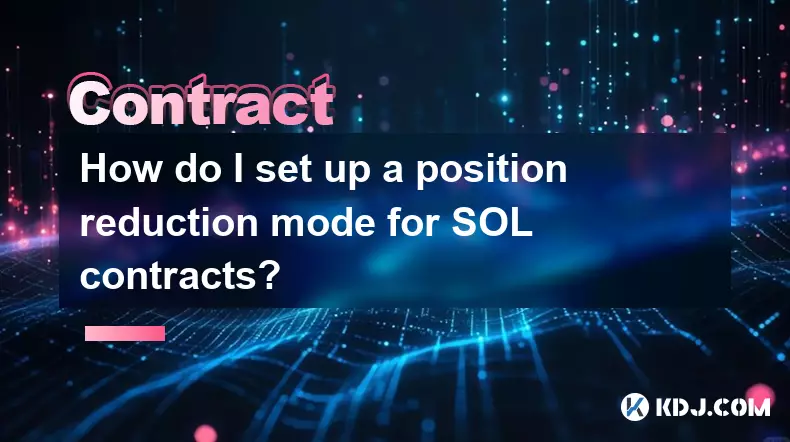
Understanding Position Reduction in SOL Contracts
1. Position reduction refers to the process of gradually closing out a portion of an open futures or perpetual contract position in the cryptocurrency market. When dealing with Solana (SOL) contracts, this strategy helps traders manage risk by minimizing exposure without fully exiting the trade. Traders often use position reduction when they anticipate volatility or wish to lock in partial profits while maintaining a foothold in the market.
2. Most major derivatives exchanges that support SOL trading pairs—such as Bybit, OKX, and Binance—offer customizable order types and execution modes that allow for structured position reduction. These platforms typically provide tools like Take Profit/Stop Loss orders, trailing stops, and conditional triggers that can be configured to reduce positions incrementally based on price movement.
3. To set up a reduction mode, users must first ensure their account is using the correct margin mode—either isolated or cross—depending on their risk tolerance. Isolated margin is often preferred for precise control over individual positions, which makes it ideal for implementing phased exits.
Configuring Step-by-Step Exit Strategies
1. Navigate to the derivatives trading interface of your chosen exchange and locate the open position in your SOL contract. Select the “Close” or “Reduce Only” option, which prevents the order from increasing your existing position size. This setting ensures that each executed order only reduces the current exposure.
2. Set multiple limit orders at predetermined price levels above or below the entry point, depending on whether the position is long or short. For example, if holding a long position in SOL/USDT, place sell limit orders at incremental highs to capture gains progressively as the market rises.
3. Utilize the OCO (One-Cancels-the-Other) order type to combine a take-profit trigger with a stop-loss. Within this structure, you can define partial closures—such as selling 50% at the first target and another 30% at the next level—with the remaining balance subject to trailing mechanisms.
4. Activate a trailing stop function to protect unrealized profits. This tool adjusts the exit price dynamically as the market moves favorably, allowing traders to automate part of the reduction process even when not actively monitoring the charts.
Leveraging Automation Tools and APIs
1. Advanced traders can integrate third-party bots or custom scripts via exchange-provided APIs to execute complex reduction logic. Platforms like KuCoin and Bybit offer REST and WebSocket APIs that enable real-time position monitoring and automated order placement based on technical indicators or time-based rules.
2. Scripts can be programmed to analyze volume spikes, RSI divergences, or moving average crossovers specific to SOL’s price action and initiate partial closures accordingly. This level of automation enhances consistency and removes emotional decision-making during fast-moving market conditions.
3. Ensure API keys are created with restricted permissions—only granting access to spot and futures trading functions without withdrawal rights. Security remains critical when deploying automated systems that interact directly with live positions.
Traders should backtest any automated reduction strategy using historical SOL price data before deploying it on active contracts.Common Questions About SOL Contract Position Management
What does 'Reduce Only' mean in SOL futures trading?It means the order will only decrease an existing position and will not open a new one or increase the current size. This prevents accidental margin expansion during partial exits.
Can I schedule automatic partial liquidation of my SOL position?Yes, many exchanges allow setting multiple take-profit levels that act as scheduled reductions. These execute automatically once the specified price targets are reached.
How do I prevent full liquidation when reducing a leveraged SOL position?Use isolated margin mode and set conservative stop-loss levels away from high-volatility zones. Monitor funding rates and adjust position size ahead of major network upgrades or macroeconomic events affecting SOL.
Is it possible to reverse a reduction after placing a partial close order?Once an order executes, the reduction is final. However, unexecuted limit orders can be canceled manually or through API commands before they fill.
Disclaimer:info@kdj.com
The information provided is not trading advice. kdj.com does not assume any responsibility for any investments made based on the information provided in this article. Cryptocurrencies are highly volatile and it is highly recommended that you invest with caution after thorough research!
If you believe that the content used on this website infringes your copyright, please contact us immediately (info@kdj.com) and we will delete it promptly.
- BlockDAG, DOGE, HYPE Sponsorship: Crypto Trends Shaping 2025
- 2025-10-01 00:25:13
- Deutsche Börse and Circle: A StableCoin Adoption Powerhouse in Europe
- 2025-10-01 00:25:13
- BlockDAG's Presale Buzz: Is It the Crypto to Watch in October 2025?
- 2025-10-01 00:30:13
- Bitcoin, Crypto, and IQ: When Genius Meets Digital Gold?
- 2025-10-01 00:30:13
- Stablecoins, American Innovation, and Wallet Tokens: The Next Frontier
- 2025-10-01 00:35:12
- NBU, Coins, and Crypto in Ukraine: A New Yorker's Take
- 2025-10-01 00:45:14
Related knowledge
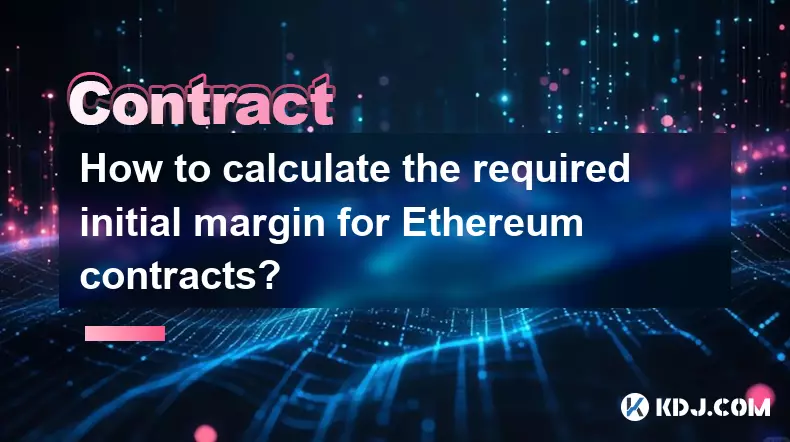
How to calculate the required initial margin for Ethereum contracts?
Oct 01,2025 at 06:01am
Understanding Initial Margin in Ethereum Futures1. The initial margin for Ethereum futures contracts represents the minimum amount of capital a trader...
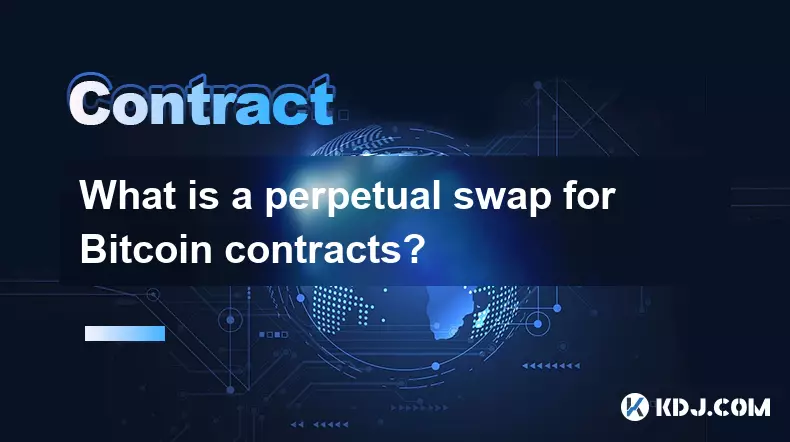
What is a perpetual swap for Bitcoin contracts?
Oct 01,2025 at 08:18am
Understanding Perpetual Swaps in Bitcoin Trading1. A perpetual swap is a type of derivative contract that allows traders to speculate on the price of ...

What is the best platform for trading SOL contracts?
Oct 01,2025 at 06:36am
Understanding the Role of Decentralized Exchanges in Modern Crypto Trading1. Decentralized exchanges (DEXs) have reshaped how traders interact with di...
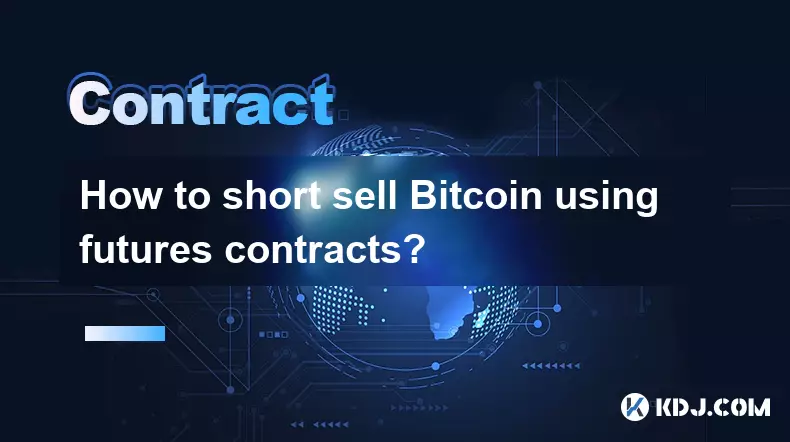
How to short sell Bitcoin using futures contracts?
Oct 01,2025 at 02:54am
Understanding the Role of Decentralized Exchanges in Crypto Trading1. Decentralized exchanges (DEXs) have become a cornerstone of the cryptocurrency e...
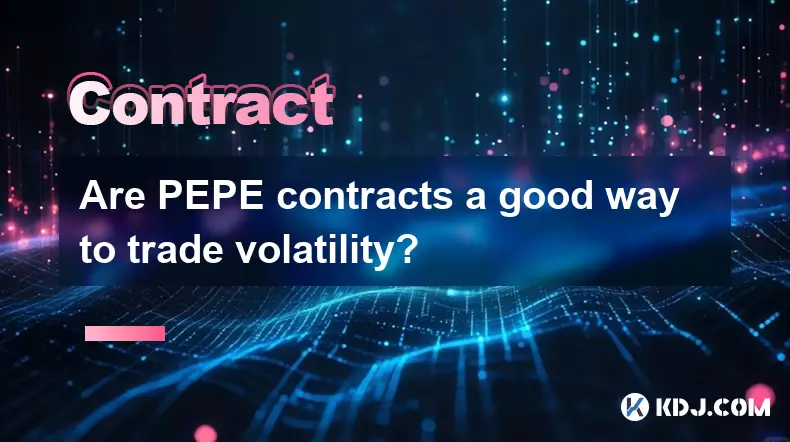
Are PEPE contracts a good way to trade volatility?
Oct 01,2025 at 04:18am
Understanding PEPE Contracts in the Cryptocurrency Market1. PEPE contracts, derived from the broader meme coin movement, have gained attention due to ...
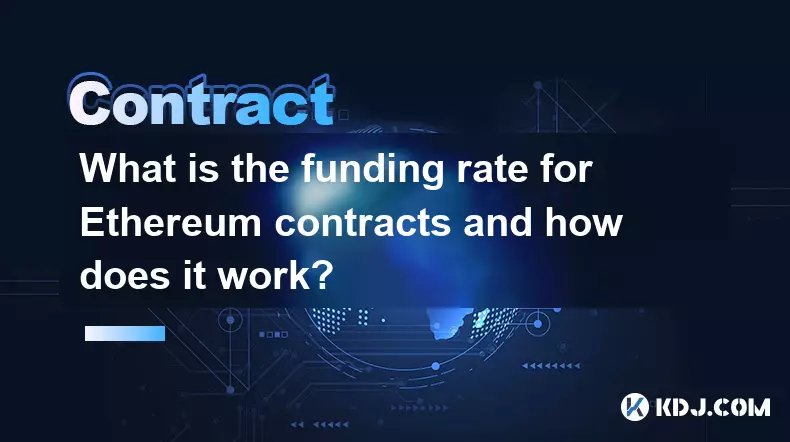
What is the funding rate for Ethereum contracts and how does it work?
Oct 01,2025 at 10:54am
Funding Rate Mechanism in Ethereum Derivatives1. The funding rate is a periodic payment exchanged between long and short positions in perpetual future...

How to calculate the required initial margin for Ethereum contracts?
Oct 01,2025 at 06:01am
Understanding Initial Margin in Ethereum Futures1. The initial margin for Ethereum futures contracts represents the minimum amount of capital a trader...

What is a perpetual swap for Bitcoin contracts?
Oct 01,2025 at 08:18am
Understanding Perpetual Swaps in Bitcoin Trading1. A perpetual swap is a type of derivative contract that allows traders to speculate on the price of ...

What is the best platform for trading SOL contracts?
Oct 01,2025 at 06:36am
Understanding the Role of Decentralized Exchanges in Modern Crypto Trading1. Decentralized exchanges (DEXs) have reshaped how traders interact with di...

How to short sell Bitcoin using futures contracts?
Oct 01,2025 at 02:54am
Understanding the Role of Decentralized Exchanges in Crypto Trading1. Decentralized exchanges (DEXs) have become a cornerstone of the cryptocurrency e...

Are PEPE contracts a good way to trade volatility?
Oct 01,2025 at 04:18am
Understanding PEPE Contracts in the Cryptocurrency Market1. PEPE contracts, derived from the broader meme coin movement, have gained attention due to ...

What is the funding rate for Ethereum contracts and how does it work?
Oct 01,2025 at 10:54am
Funding Rate Mechanism in Ethereum Derivatives1. The funding rate is a periodic payment exchanged between long and short positions in perpetual future...
See all articles










































































